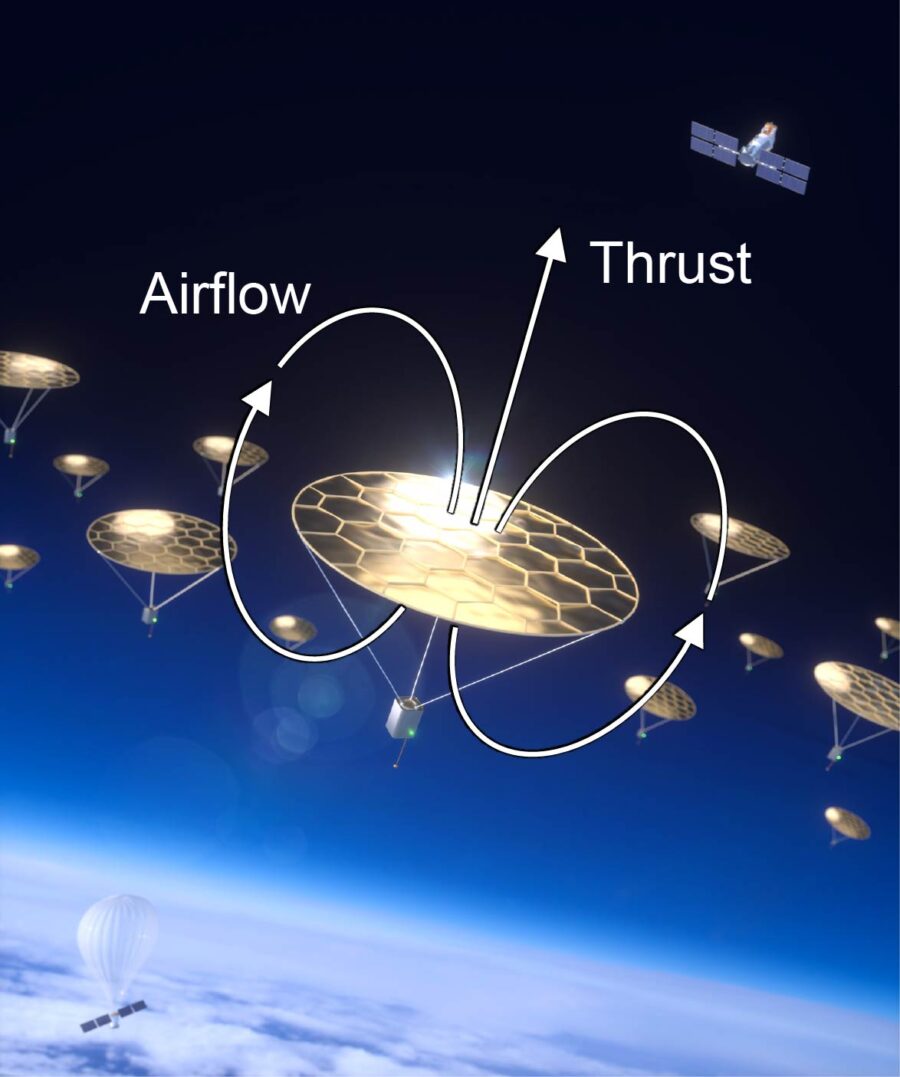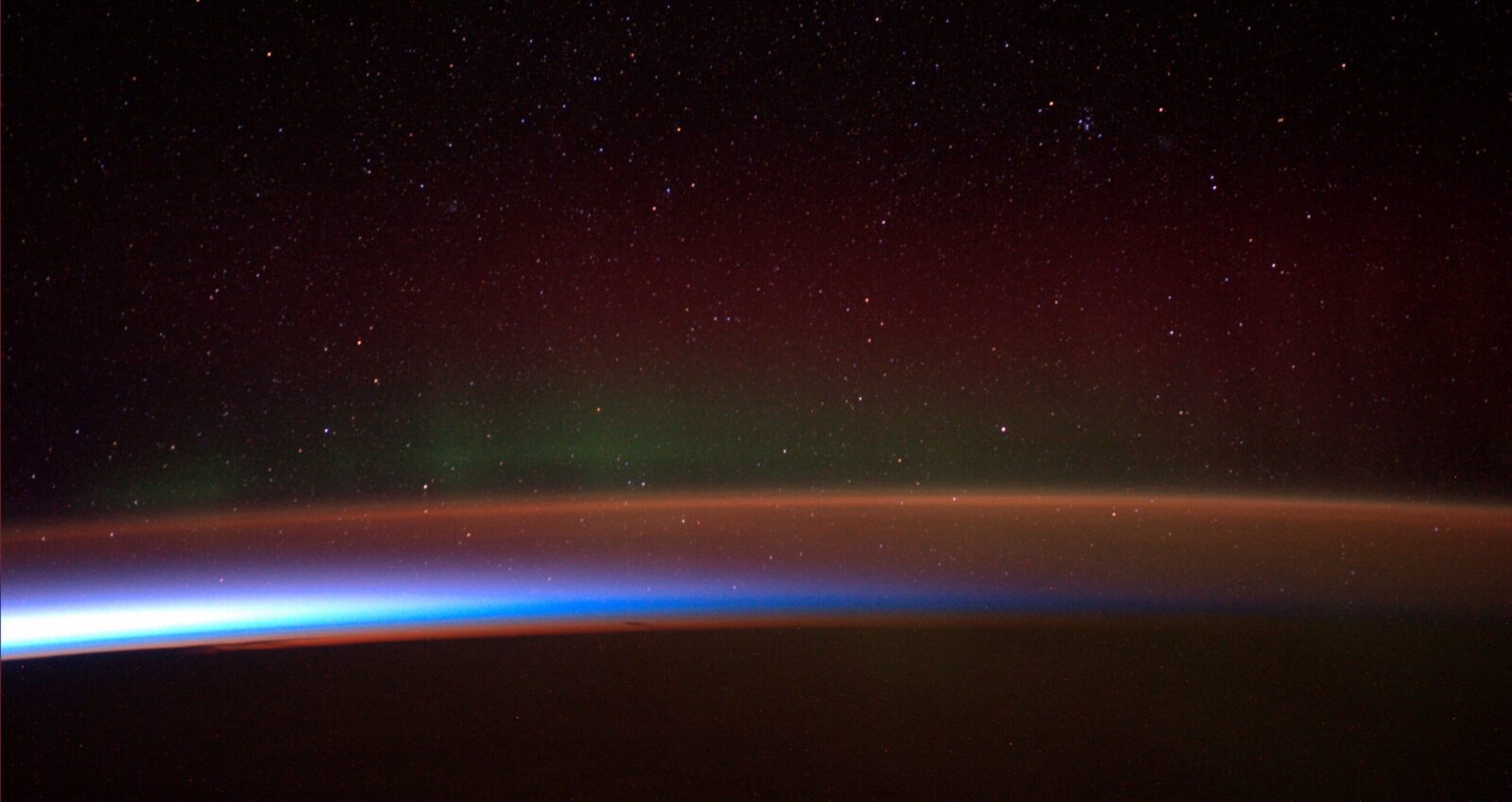Stay Up to Date
Submit your email address to receive the latest industry and Aerospace America news.
As far as nicknames go, “ignorosphere” seems an apt one for Earth’s mesosphere. This atmospheric layer earned the name from scientists because of the difficulty they face in studying it: At 50-85 kilometers in altitude, it’s too high for surveillance by aerial vehicles and too low for steady monitoring by speeding satellite sensors.
Now, a research team believes it has come up with a way around these challenges: nanofabricated structures that can passively float.
If all goes as planned, a high-flying demonstration slated for next year will demonstrate that these structures can loiter in the mesosphere long enough to collect atmospheric measurements and other information.
An August paper in the journal Nature described the chosen method: photophoresis. Regarded as a novelty of physics, this phenomenon occurs when molecules migrate off the illuminated and heated side of an object with enough velocity to produce thrust in low-pressure environments.
“Because there’s nothing else that can sustainably fly in the mesosphere, we could use these devices to collect groundbreaking atmospheric data to benefit meteorology, perform telecommunications, and predict space weather,” said Benjamin Schafer, lead author of the paper and a former graduate student at Harvard University.
He added: “Photophoresis requires no fuel, batteries, or photovoltaics, so it is an inherently sustainable flight mechanism.”
Schafer’s idea partly drew upon a concept previously proposed by his graduate advisor, David Keith, then a professor at Harvard’s John A. Paulson School of Engineering and Applied Sciences, and now at the University of Chicago. Keith saw reflective membranes as a possible way to lessen climate change by channeling sunlight away from Earth.
The question tackled by Schafer: What was the optimal structure that could loft the most weight possible, and where could it fly?
So he and his colleagues developed equation-rich analytical models that calculated the photophoretic lofting force and control of a photophoresis-powered device within the stratosphere.
“We modeled the photophoretic forces on centimeter-scale structures to find their optimal design for atmospheric flight. We used these results to fabricate structures that can fly in near-space conditions, namely, under less than the illumination intensity of sunlight and at the same pressures as the mesosphere,” he said.
The structures they modeled look like gossamer grey squares, about a centimeter per side, although Schafer said they can be made into any shape. Despite their wispy appearance, they have the highest rigidity of any structure with this weight, he said, meaning they are incredibly strong for how much they weigh.
“Our structures have two layers: a top and a bottom. The top surface is mostly transparent to sunlight, so sunlight is preferentially absorbed by the bottom layer, which heats up,” he said. “As the surrounding gas collides with the structure, they are more likely to bounce away from the bottom layer at a higher temperature than those that bounce away from the top layer.”
The result? “Hotter gas molecules have higher velocity, so the collisions transfer more momentum to the bottom surface, resulting in an upward force.”
To bolster the Harvard investigations, Schafer last year co-founded Rarefied Technologies, a startup headquartered in Albuquerque, New Mexico. He now serves as chief executive officer and is overseeing preparations for the planned 2026 demonstration.
The company has spent most of this year modeling atmospheric flight profiles, fabricating prototypes and running flight tests in vacuum chambers, Schafer said. “But we’re also looking at what deployment hardware could bring our structures to the upper atmosphere, and how we could track them once they are released.”
For their first use, Schafer envisions monitoring upper atmospheric winds. The structures could gather vital information in what’s often considered a blind spot of the atmosphere, he said, to enhance weather forecasting and help scientists better gauge climate models.
“By studying things like mesospheric winds, temperatures, and pressures, we can learn how this elusive region affects things like terrestrial and space weather,” said Schafer.
And there are other potential applications: Because photophoresis works in any low-pressure environment with enough light, they could also be used to explore the Martian atmosphere, he suggested.
Martin Ross, an atmosphere researcher for the Aerospace Corp., has yet another idea: measuring the atmospheric impact of increased space launches. The advent of very low Earth-orbiting satellites, recoverable rocket upper stages and suborbital transport vehicles means the mesosphere will play an increasing role in on-orbit operations, Ross said.
“The space enterprise will have to better understand mesospheric dynamics and variability as well as mysterious clouds at the edge of space caused by rocket exhaust and meteoroid and space debris ablation, Ross told me.
He said the photophoresis work “points to the possibility of collecting continuous and on-the-spot mesospheric data for the first time and possibly collecting mesospheric cloud and smoke particles for laboratory analysis.”
For the time being, Schafer said the photophoresis work is somewhat like the Wild West of applied physics.
“Photophoresis has largely been considered a novelty of physics since it was first demonstrated by English chemist Sir William Crookes in the late 1800s,” Schafer said. “Only recently has nanofabrication gotten good enough that microscale applications of photophoresis, including ours, are emerging. There are many more cool devices people are making using photophoresis, and research in this area is growing quickly.”
About leonard david
Leonard has reported on the space industry for five decades. He is the author of several books, including “Moon Rush: The New Space Race” and “Mission to Mars — My Vision for Space Exploration,” co-authored with Buzz Aldrin.
Related Posts
Stay Up to Date
Submit your email address to receive the latest industry and Aerospace America news.





